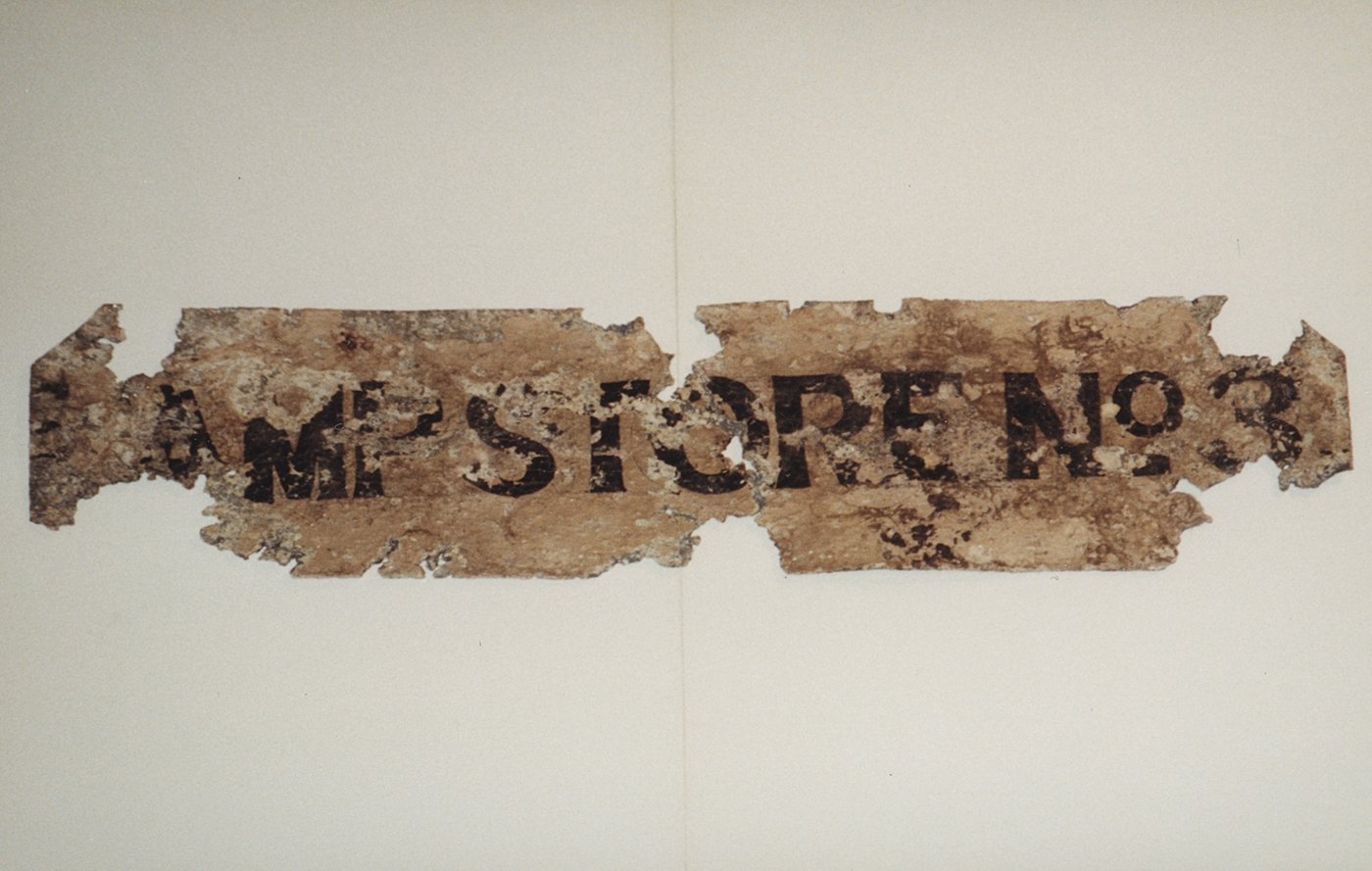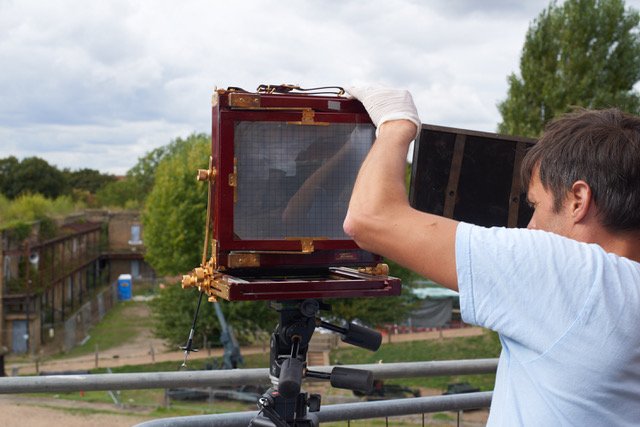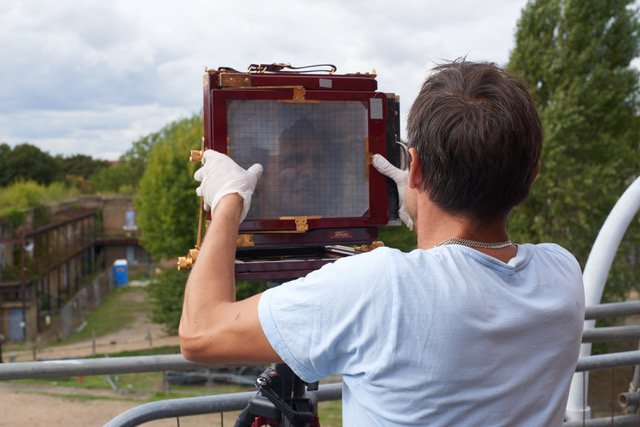NEW DEFENCE
Throughout 2016 we delivered a co-operative project called NEW: DEFENCE working with a team of artists, curator Gemma Padley, and a communications team led by Nicola Jeffs on a large-scale regeneration project that took a fresh look at the theme of ‘defence’ by using art as a catalyst to stimulate positive social impact at Caolhouse Fort, an underused coastal defence site on the Thames Estuary in an area that has historically seen very little creative enterprises.
In the year that marks the centenary of the end of the First World War, we commissioned artists working across photography, sculpture, installation, film and sound to create work relating to the theme ‘defence’ alongside existing artworks made in response to the site itself and the rich archive of objects, documents and photographs, housed in Thurrock Museums Archive Centre in Grays.
Making use of the dungeon-like magazines in the bowels of the building, dark and ghostly corridors, and casemates where guns would have stood, as well as the fort’s dedicated gallery space, NEW: DEFENCE takes visitors on a journey through an extraordinary historical site, inviting audiences to consider how we engage with these kinds of spaces, and what their future purpose might be.
The exhibition takes the 200-year-old fort itself and its location on the Essex peninsula, overlooking the River Thames, as its starting point. Caught between a military past and its current use as a tourist attraction and cultural space, the fort and its identity are gradually changing. On the one hand Coalhouse Fort is falling apart, it is redundant, being reclaimed by nature, and is vulnerable and fragile – the very antithesis to its original purpose. It is this tension – between the fort’s past and its future possibilities – that provides the backbone of the exhibition.
POP UP GROUP EXHIBITION
Tom Brannigan
Tom Brannigan is a still life photographer based in the UK who works with analogue and digital processes. His interests lie in finding original ways to communicate strong ideas visually. For both his personal and commercial work, Tom uses photography, sculpture and installation to create works, sometimes infused with wit and humour, that make the viewer stop in their tracks and question what it is they are looking at.
“Inspired by stories of families who made the fort their home in the 1950s and ’60s, I used objects from the archive to create anthropomorphic sculptures that stand as gatekeepers of this paradoxical space”
Victoria Coster
London-based multidisciplinary artist Victoria Coster works with digital data, sound, sculpture, installation, drawing, photography, and moving image, among other media. With an interest in corrupting and excavating the DNA of images and objects, Victoria, whose work is driven by research, creates works that challenge our perceptions of self in relation to object, other and environment.
“The works in NEW: DEFENCE explore ideas around destabilisation and the language of materials by looking at how digital data or objects behave when used in a way they’re not designed to be used.”
Felicity Hammond
Felicity Hammond’s work encompasses photography, digital collage, sculpture, and installation through which the British artist questions the ways we construct, perceive, and experience the changing urban environment. In particular, her work considers the tension between the post-industrial landscape and what we might call a contemporary capitalist-driven utopia.
“In Defence of Industry brings into focus the relationship between the industrial history of Barrow-in-Furness and the wider Cumbrian landscape, in particular, the area’s mining history and shift towards the nuclear industry during the mid-twentieth century.”
Laurynas Karmalavicius
Lithuanian-born artist Laurynas Karmalavicius works with materials that include wood, metal, and stone. Through his artworks he explores the dramatic characteristics of humans’ destructive approaches to the planet and towards each other.
“An animal will attack because it feels threatened. It’s the same with humans. This work, which can be interpreted as an attacking bull, draws a parallel between animal and human behaviour in terms of responding to a perceived or real threat.”
Corinne Silva
Corinne Silva’s practice is concerned with landscape as a complex interrelation of culture and geography, politics and botany, living beings and inanimate matter. The effect of human activity on land, geographic and political borders, migration and ecology are among the issues the London based artist investigates in her photographic and video works.
“I begin my quest in the Mediterranean. Taking a circular route, I make photographs of castles and watchtowers – collecting the earth where I stand, tracing pathways of power and longing, enacting the right to roam freely.”
Dafna Talmor
Dafna Talmor is an artist based in London. Her current primary focus is an ongoing photographic project, Constructed Landscapes, made from collaged colour negatives shot across different locations. This series engages with representations of landscape and playfully subverts its tropes and pictorial conventions through historical and contemporary references.
“Photographing Coalhouse Fort’s surrounding grounds, re-configuring the landscape by embedding multiple views and obliterating any indication of the military structures that originally occupied this space, the collaged images will be presented as postcards, pointing to the re-packaging, repurposing and preservation of this now defunct fort as heritage site and tourist destination.”
Alastair Thain
Internationally acclaimed British photographer Alastair Thain is known for his dynamic and arresting large-scale photographic portraits, often shot with cameras he has made. His work is concerned with the construction and depiction of empathy through portraiture and inspired by Joseph Beuys’s belief in the healing power of art.
“In response to the suffering I’ve witnessed, I began to make work that examined the cognitive underpinnings of the human condition. Having observed the consequences of a catastrophic collapse of empathy, I created work that explores notions of identity, the imperatives for power, and human beings’ subconscious desire for aggression.”
Michael Whelan
Photographic artist Michael is interested in humans’ complex relationship with the environment and how this plays out in individual and collective behaviour. Exploring the connections we have with objects, his work combines 2D and 3D processes as a means to dissect scale. Diverse topographic perspectives and human interaction also inform his practice.
“Working with plastic waste found within an area of the Thames Estuary marked out on an old military map from the fort’s archives, the series explores how plastic exists like a scar on the landscape, visually suppressing the beauty of the surroundings.”
Samuel Zealey
With an interest in the relationship between new technologies and environmental issues, British sculptor Samuel Zealey combines precise engineering with a material sensibility to create works that engage with and question issues of culture, technology, and sustainability.
“This work is from my Folded Steel Plane series — a set of sculptures that explores the polarities between weightlessness and gravity. These scaled-up paper planes play with the material contrast between paper and steel.”
During the project we directed a team of 15 artists, 25 production crew members, and over 30 volunteers throughout the project that included local community members and students from local colleges and universities to help produce monthly pop-up exhibitions with established artists.
ARCHIVE
The project included a 6 month digitising archeological materials from the Coalhouse Forts archives held at Thurrock Council. This valuable archive will be made available electronically to inform future generations, forming part of the legacy of the project and a step towards creating a permanent exhibition space and museum at the fort.
ARTIST RESIDENCIES
This is part of a wider initiative to create a vibrant, attractive, multi-use heritage and cultural attraction in Essex. Following this we held a summer of artists residencies where artists made work in response to the archives alongside a programme of events such as a pop-up exhibition with talks and educational workshops, all taking place at Coalhouse Fort, a project specific website and video, which have all been possible with the generous support of Heritage Lottery Fund and Arts Council England.
























































































































